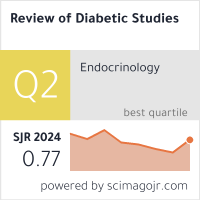Stepwise 20% And 40% Radiation Dose Reduction In Routine Nuclear Medicine: A Prospective Quality Improvement Study
DOI:
https://doi.org/10.70082/fcrt4552Keywords:
nuclear medicine, dose optimization, SPECT, MPI, bone scintigraphy, gallium 67, renography, DMSA, thyroid scintigraphy, pediatric dosing.Abstract
Background:
Reducing radiation exposure is a core goal in nuclear medicine, in line with the ALARA principle (As Low As Reasonably Achievable). To support this, we introduced a two-phase dose reduction strategy (first by 20%, then by 40%) across six commonly performed studies. We evaluated whether image quality remained clinically acceptable despite the lower doses.
Methods:
This was a prospective quality-improvement study conducted at a single center. In the first phase, we documented the current standard maximum administered doses. The next two phases reduced those doses by 20% and then 40%, enrolling 60 patients per study group in each phase, including 10% pediatric patients. The main outcome was the actual amount of radioactivity given (in MBq/kg). Image quality was also assessed using a blinded Likert scale, with a defined non-inferiority threshold of Δ = −0.3 compared to baseline. We also tracked repeat scan rates and adverse events.
Results:
Despite the dose reductions, median image quality scores remained stable (4.1 to 4.0 to 4.0), with no significant drop in quality. There was also no increase in repeated scans or adverse events.
Implementation of the reduced-dose protocols (−20% and −40%) was not associated with an increase in repeat examinations compared with the baseline protocol, and no scan was repeated because of inadequate image quality. Adverse events were rare and comparable across all dosing groups, with no new safety signals observed.
Conclusions:
This structured two-step dose reduction protocol (−20%, −40%) led to significant reductions in radiation dose without sacrificing diagnostic quality. These results support broader implementation of such protocols, especially when combined with advanced imaging techniques, careful preparation, and strong quality control.
Downloads
Published
Issue
Section
License

This work is licensed under a Creative Commons Attribution-ShareAlike 4.0 International License.


